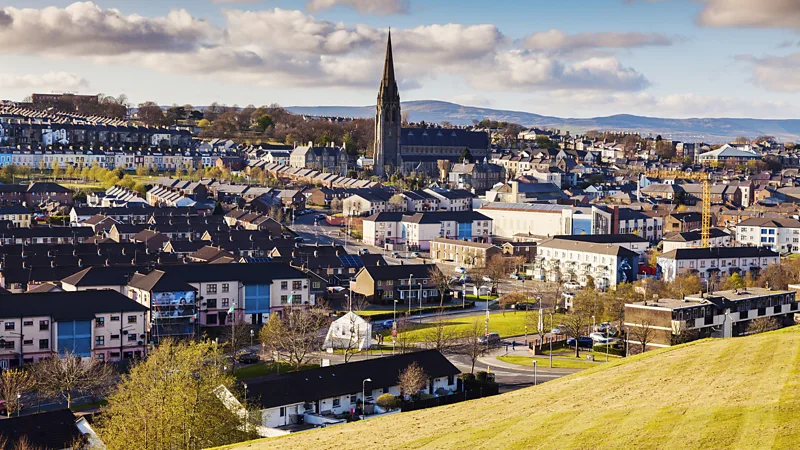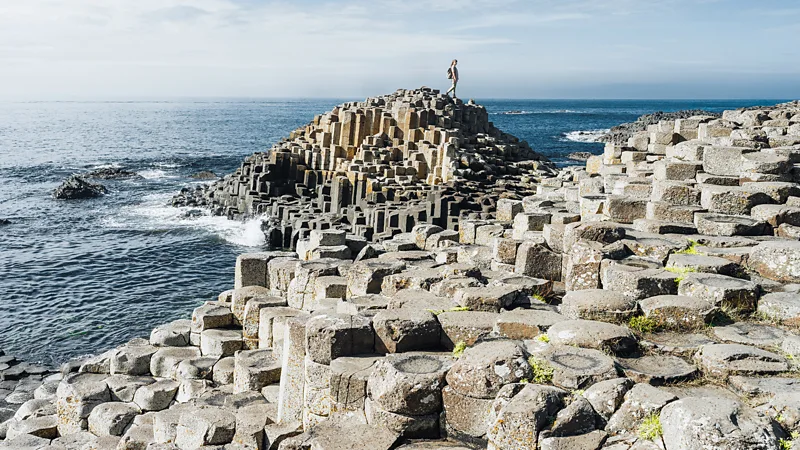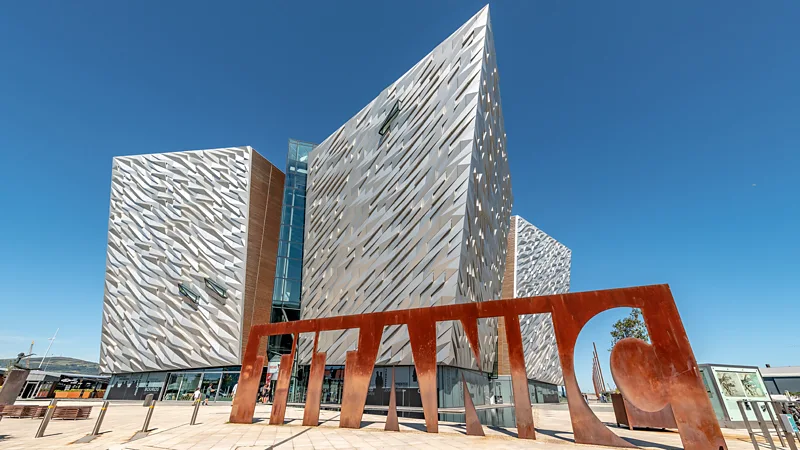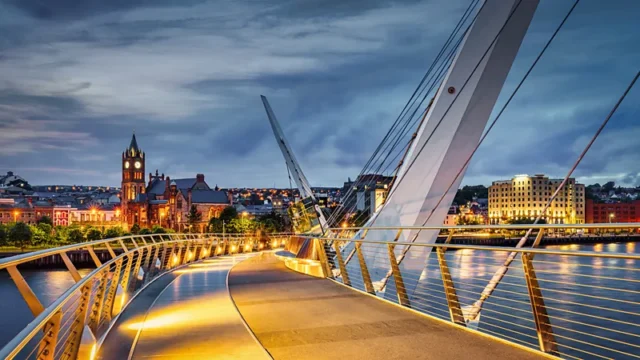Introduction:
Northern Ireland, a region once shrouded in conflict and division, has undergone a remarkable transformation over the last three decades. Once a destination almost devoid of tourism, the country is now reclaiming its story, with optimism and peace drawing travelers to its stunning landscapes, vibrant cities, and rich history. This guide explores how Northern Ireland tourism, particularly the city of Derry, has shifted from a turbulent past to become a thriving tourist destination.
A New Era for Northern Ireland Tourism
Thirty years ago, Northern Ireland’s tourism industry was practically non-existent, overshadowed by the long-standing conflict known as The Troubles. The nation was deeply divided between Protestant loyalists who supported remaining in the UK and Catholic nationalists who sought reunification with the Republic of Ireland. During the height of the conflict, from the late 1960s until the Good Friday Agreement of 1998, cities like Derry were on the frontline, experiencing violent clashes, bombings, and military presence.
However, in the years following the peace agreement, the region has slowly but steadily emerged as a tourist destination. Northern Ireland has evolved into a symbol of resilience, offering visitors not only a glimpse into its complex history but also a fresh look at its vibrant culture, scenic beauty, and burgeoning food and drink scene.
Ebrington Square: From Conflict to Culture Hub
One of the most iconic examples of Northern Ireland’s transformation is Ebrington Square in Derry. Located on the northern banks of the River Foyle, this once military-occupied space now hums with life. On a sunny Saturday evening, tourists can be found enjoying a drink at the newly opened Ebrington Hotel & Spa or soaking in the music from street performers outside the Embankment Bar & Grill. It’s a scene far removed from the days of conflict when Ebrington Square housed British army barracks during The Troubles.
Today, Ebrington Square has been repurposed as a cultural and leisure hub, connected to the rest of the city by the Peace Bridge. The S-shaped bridge serves as a powerful metaphor for the peace process—its winding path representing the complicated but ultimately successful journey to reconciliation.

Derry: A City Transformed
The city of Derry, also known as Londonderry depending on one’s political stance, has seen a dramatic transformation over the last 25 years. As Aeidin McCarter, Derry Council’s Investment and Enterprise Development officer, notes, “Derry has been transformed over the past 25 years, and last year was our biggest ever year for visitors.” While many visitors are still drawn by the city’s history of The Troubles, they now come to experience a destination like any other European city.
One of the city’s biggest attractions is its 17th-century walls. Tourists can walk the length of these once heavily guarded fortifications, taking in panoramic views of the River Foyle, the mountains of Donegal, and the historic Bogside district, a key area during The Troubles. Bloody Sunday, a tragic event where British troops shot and killed 13 civil rights protesters, occurred here in 1972, and visitors can explore this history at the Museum of Free Derry.
The Peacemakers Museum: Documenting the Path to Peace
Derry’s latest attraction, the Peacemakers Museum, opened in July 2024. This museum focuses on the transition from conflict to peace, highlighting key events that led to the Good Friday Agreement. The museum walks visitors through periods of violence, civil unrest, and the peace process, with a particular focus on local politicians like John Hume, who was instrumental in the peace negotiations. Hume’s Nobel, Gandhi, and Martin Luther King peace prizes can also be viewed at the Guildhall Museum in Derry.
A Growing Tourism Industry
As peace has taken root, Northern Ireland’s tourism industry has expanded. One of the most popular attractions is the Titanic Belfast Museum, which opened in 2012. Dedicated to the world’s most famous cruise liner, the museum has drawn over eight million visitors since its opening and generates approximately £70-80 million annually for the local economy. Judith Owens, CEO of Titanic Belfast, attributes this success to the post-Good Friday Agreement atmosphere, explaining, “Our job was to take the Titanic brand and use it to catapult Northern Ireland into the global tourism industry.”
New Cross-Border Initiatives
In 2020, the Irish government launched the Shared Island Initiative, aimed at enhancing cooperation between Northern Ireland and the Republic of Ireland. One of its key projects is the development of a continuous driving route that will connect Northern Ireland’s Causeway Coastal Route with the Republic’s Wild Atlantic Way. This scenic drive will take travelers through some of the island’s most rugged and picturesque landscapes, linking them to Northern Ireland’s many attractions.
Another significant project is the Narrow Water Bridge, which officially launched in June 2024. Scheduled to open in 2027, this bridge will span Carlingford Lough, connecting Northern Ireland with the Republic. Not only will this project improve accessibility for tourists, but it also symbolizes the growing cooperation between the two nations.

The Role of Local Visionaries in Northern Ireland tourism
While government initiatives and international interest have played a role in transforming Northern Ireland’s tourism, local visionaries have also been instrumental. Martin McCrossan, a Derry local with a keen interest in history, was among the first to recognize the potential for tourism in the post-conflict era. In 1994, he founded a tour guiding business, which has since become a family enterprise. His daughter Charlene now runs the company and regularly leads tours to Derry’s historic walls, cathedrals, and popular filming locations from the TV series Derry Girls.
As Charlene recalls, “I remember him telling me that one day there would be peace and, in its wake, tourists.” Today, her father’s vision has become a reality, with tourists flocking to Derry from around the world to explore its fascinating history and vibrant culture.
Conclusion: A New Chapter for Northern Ireland
Northern Ireland’s story is one of resilience and transformation. From the dark days of The Troubles to the optimism brought about by the Good Friday Agreement, the region has redefined itself as a dynamic and welcoming tourist destination. Whether exploring the rich history of Derry, walking the scenic coastal routes, or visiting world-class attractions like Titanic Belfast, travelers are rediscovering a Northern Ireland that is thriving, peaceful, and ready to share its story with the world.
This resurgence in tourism and development speaks to the power of peace and collaboration, offering a bright future for a country that has truly reclaimed its narrative.












